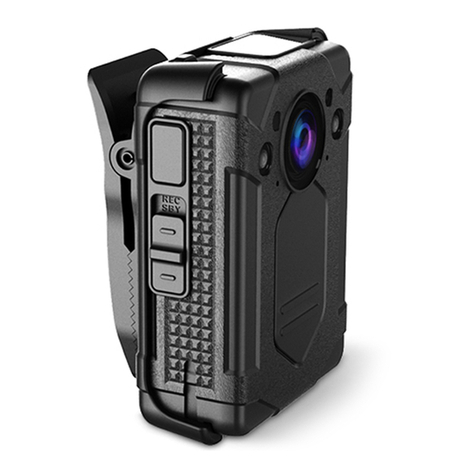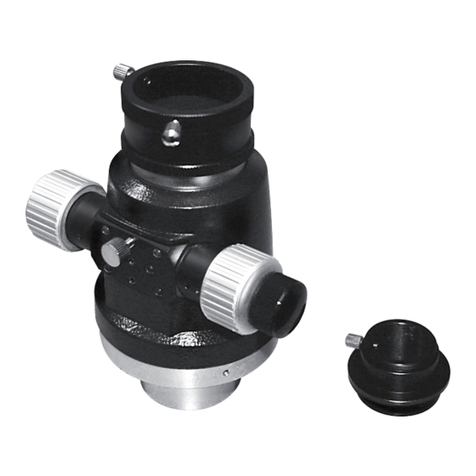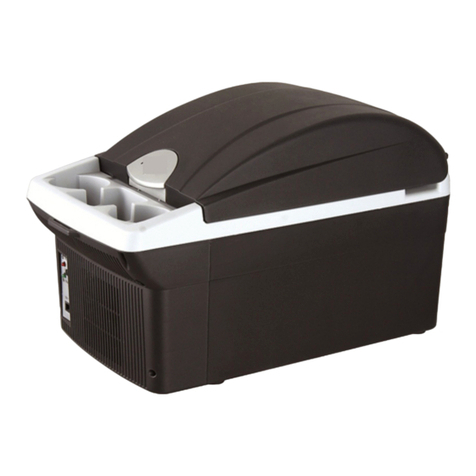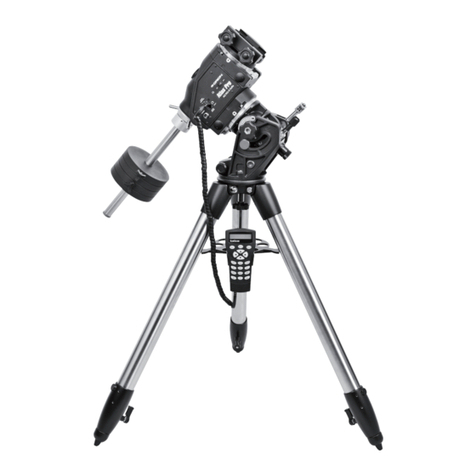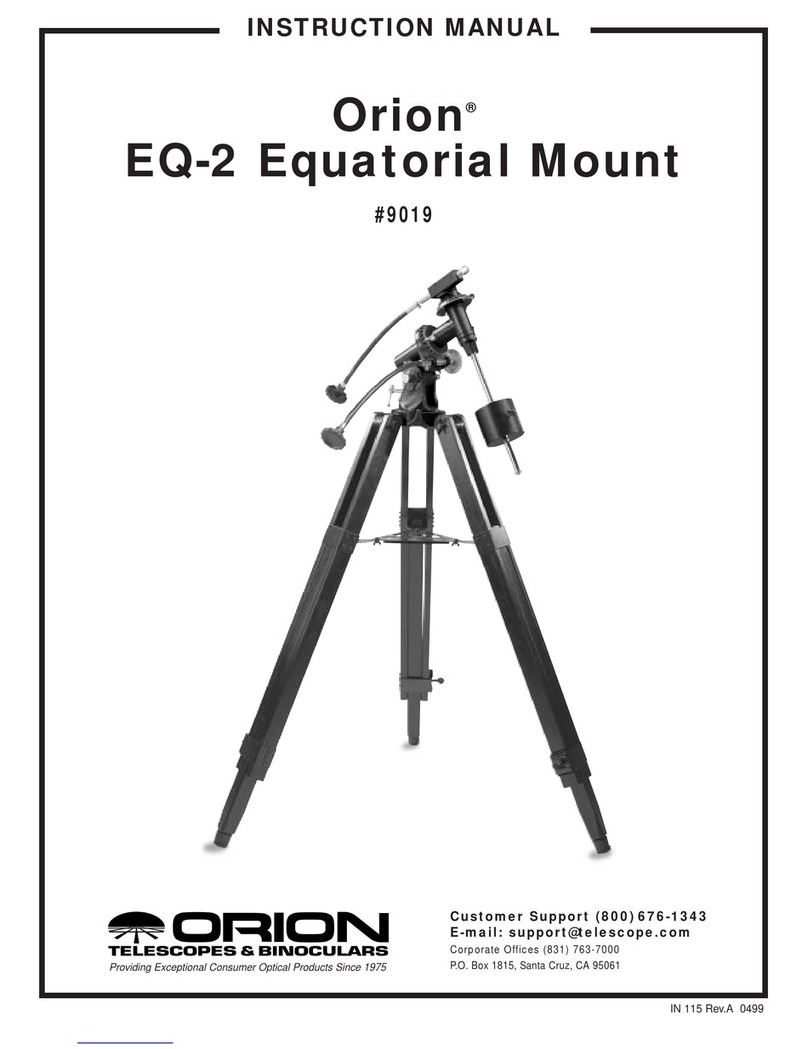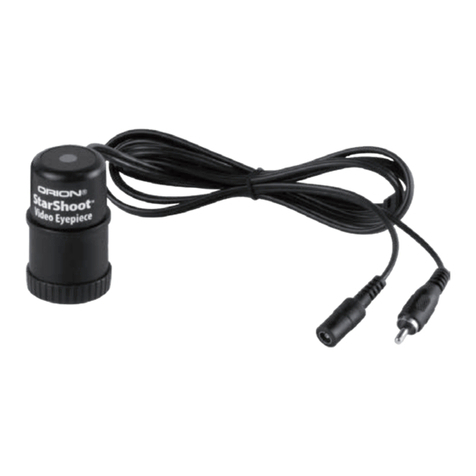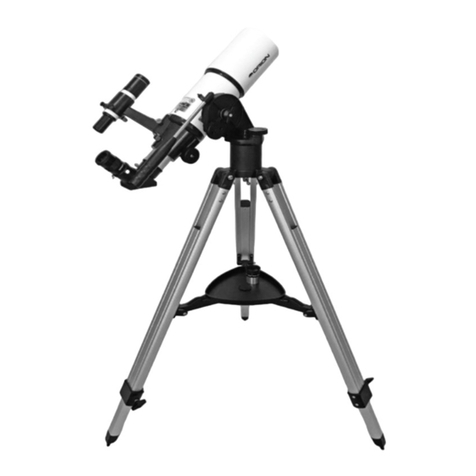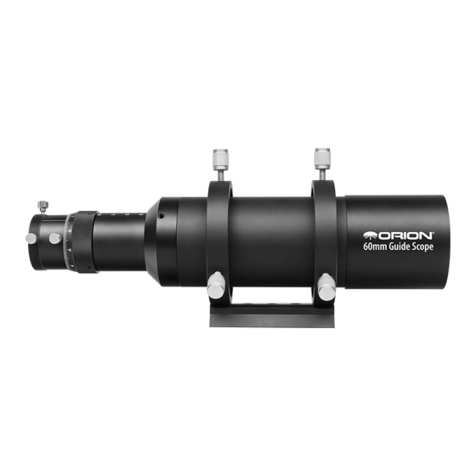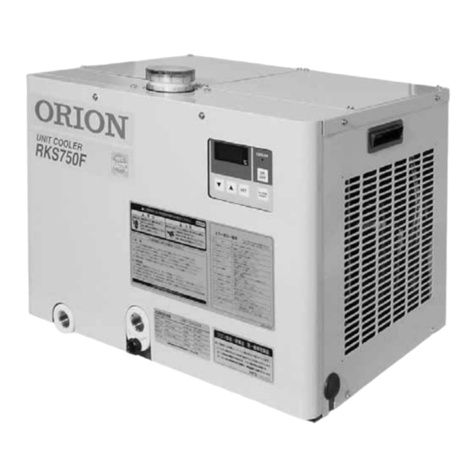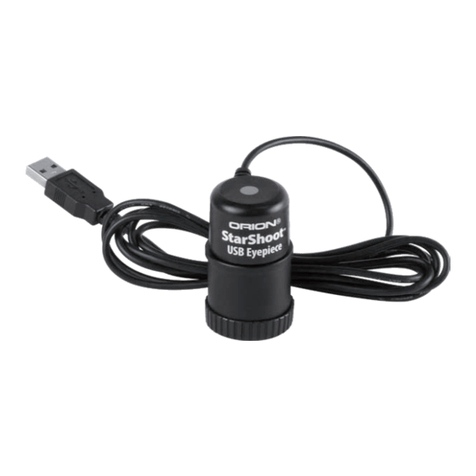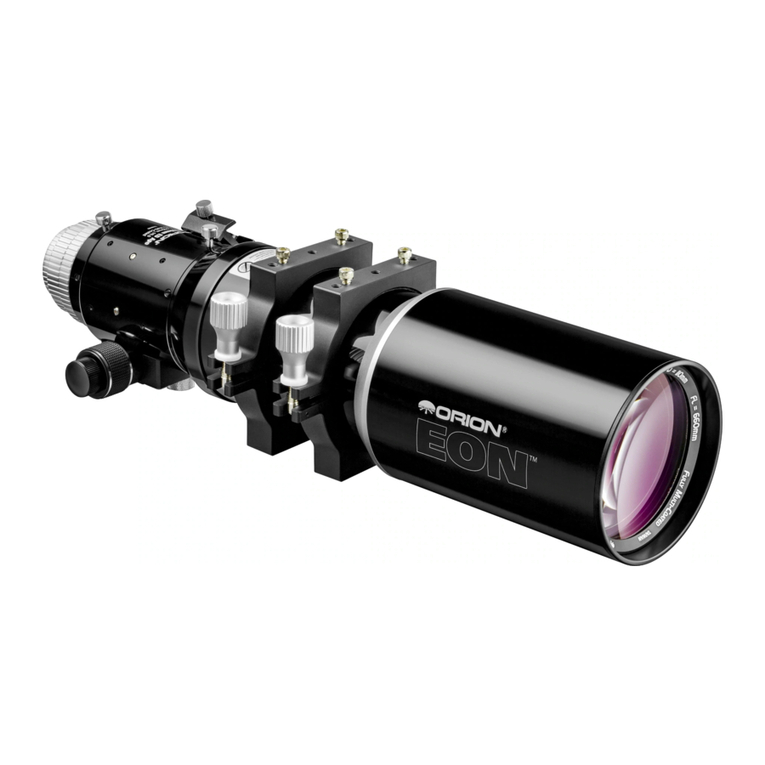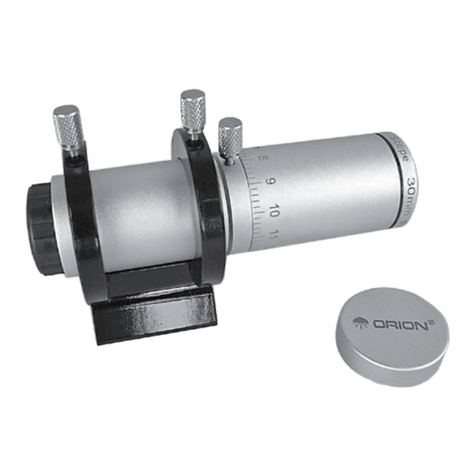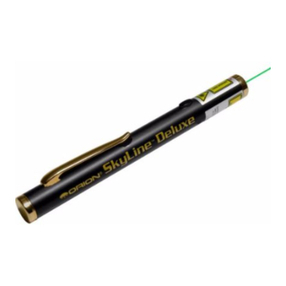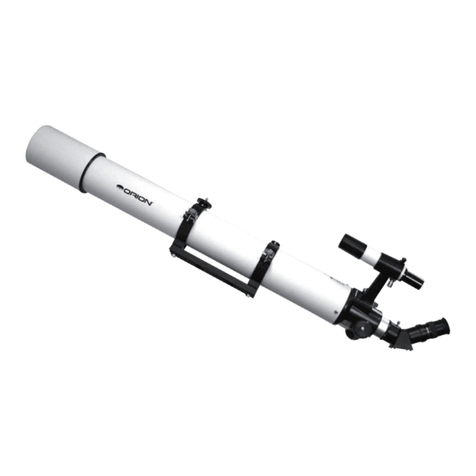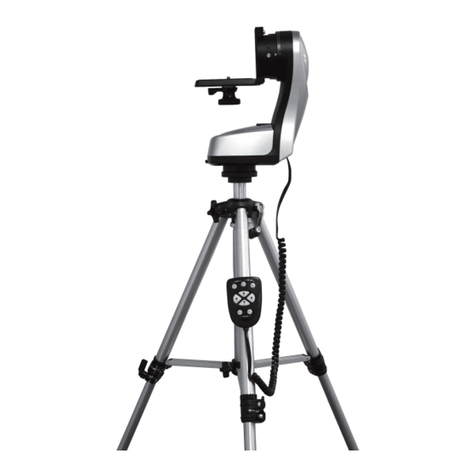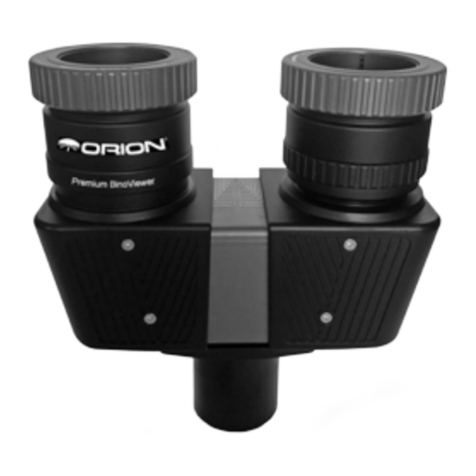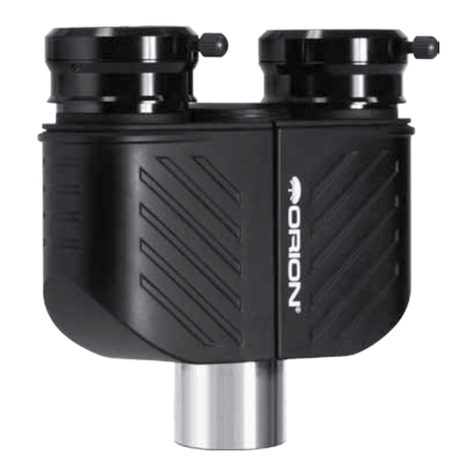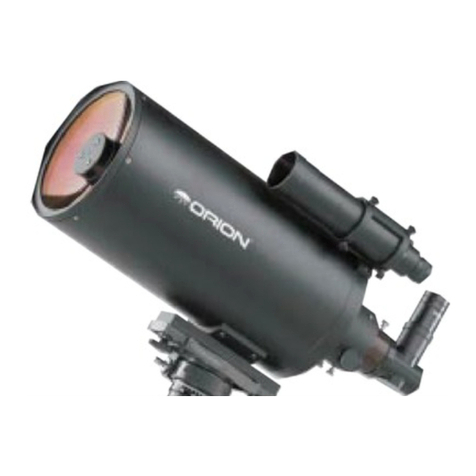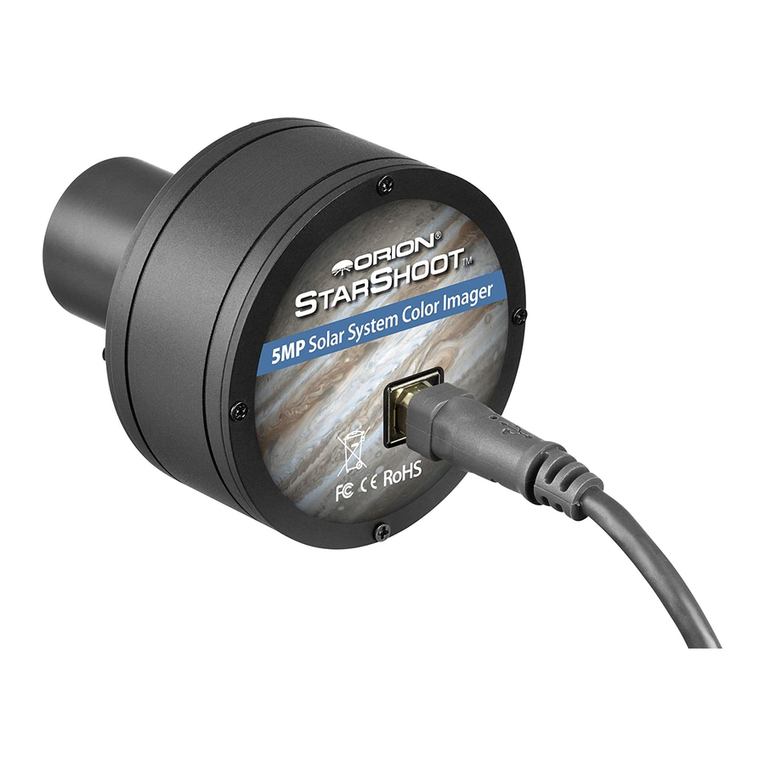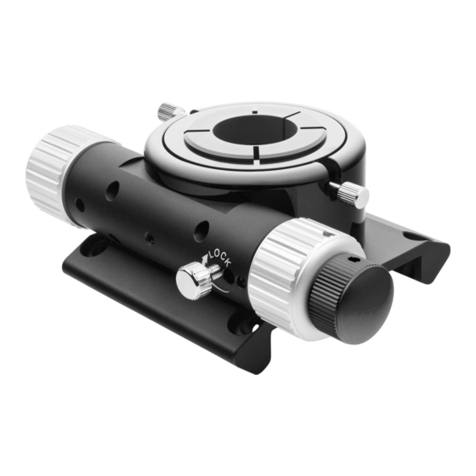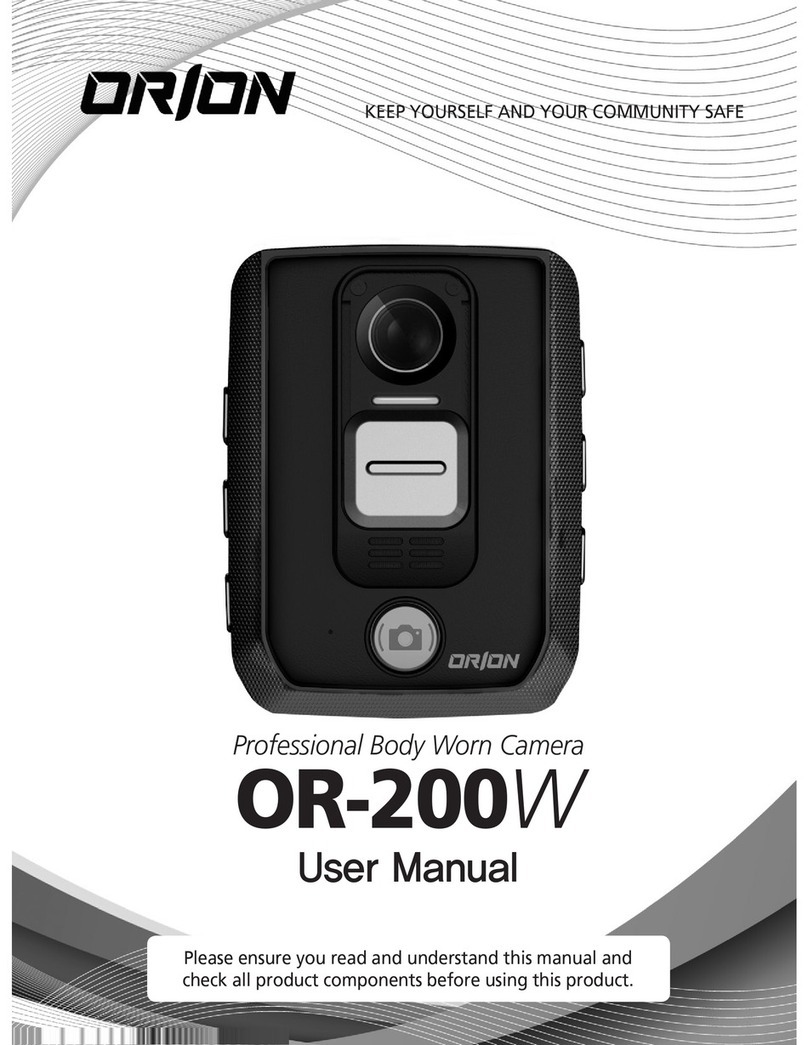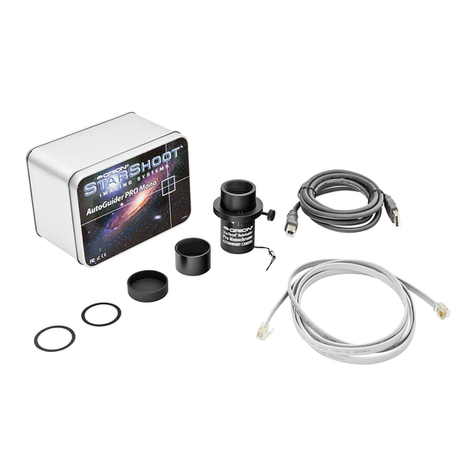4
1. Lay the equatorial mount on its side.Attach the tripod legs
one at a time to the base of the mount by sliding the tripod
leg attachment bolt into the slot in the mount and lightly
tightening the knob finger-tight. Note that the hinged
accessory tray bracket on each leg should face inward.
2. Tighten the leg lock bolts at the base of the legs. For now,
keep the legs at their shortest (fully retracted) length; you
can extend them to a more desirable length later, after the
scope is completely assembled.
3. Withthetripodlegs nowattached tothe equatorialmount, stand
thetripod upright(be careful!)andspreadthelegsapartenough
to attach the accessory tray to the three hinged tray brackets on
the legs. The brackets should be positioned underneath the
tray. Use the three small accessory tray screws and wing nuts
provided. Do not tighten the wing nuts yet.
4. Now, with the accessory tray attached loosely, spread the
tripod legs apart as far as they will go, until the accessory
tray brackets are taut. Then tighten the wing nuts.
5. Next, tighten the tripod leg attachment bolts at the base of
the equatorial mount, so that the legs are securely fastened.
6. Remove the retaining knob and washers from the bottom
end of the counterweight shaft. Slide the counterweight
onto the shaft, then replace the washers and the retaining
knob. The washers and knob will prevent the counter-
weights from slipping off the shaft and possibly onto your
foot if the counterweight lock knobs should come loose!
7. At the top end of the counterweight shaft, note the knurled
shaft collar. Rotate it so as much of the threaded end of the
shaft as possible is visible. Now, with the counterweight
lock knob loose, grip the counterweight with one hand and
thread the shaft into the equatorial mount (at the base of
declination axis) with the other hand. When it is threaded
as far in as it will go, twist the shaft collar clockwise to
secure the shaft. Position the counterweight about halfway
up the shaft and tighten the counterweight lock knob.
8. Orient the equatorial mount as it appears in Figure 1, at a
latitude of about 40°, i.e., so the pointer next to the gold-
colored latitude scale is pointing to the hash mark at 40.
To do this, loosen the latitude lock lever (on the side of the
mount opposite the gold latitude scale), and turn the lati-
tude adjustment knob until the pointer and the 40 line up.
Then tighten the latitude lock lever. Also tighten the decli-
nation (Dec.) and right ascension (R.A.) lock levers.
9. Remove the caps from the narrow end of the polar scope and
the polar scope port in the equatorial mount. Insert the nar-
row end of the polar scope into the open port. While gripping
the wide end of the polar scope (but not the eyepiece at the
very end), thread it clockwise into the port until it is secure.
10.Nowattachthetwoslow-motioncablestotheR.A.andDec. worm
gear shafts of the equatorial mount by positioning the setscrew on
theend ofthe cableover theindented sloton theworm gearshaft,
then tightening the setscrew. The cables can be attached to either
end of the shafts, whichever is most convenient for you.
Your SkyView Deluxe Equatorial Mount is now set up and
ready to use.
3. Attaching A Telescope
The SkyView Deluxe Equatorial Mount is designed to hold small
tomid-size telescopes weighingup toabout 13lbs.For heaviertel-
escopes, the mount may not provide sufficient stability for steady
imaging. Any type of telescope can be mounted on the SkyView
Deluxe Equatorial Mount, including refractors, Newtonian reflec-
tors, and catadioptrics, provided a proper adapter or set of tube
rings is available to couple the tube to the mount.
Orion carries a variety of differently sized tube rings and a 1/4"-
20 mounting adapter designed exclusively to fit the SkyView
Deluxe mount. One of these items may fit the telescope tube you
wish to mount. See the list of Suggested Accessories at the end
of these instructions, or check the Orion print or online catalogs
for currently available mounting accessories.
4. Balancing the Telescope
Once the telescope is attached to the equatorial mount, the
next step is to balance the telescope. Proper balance is
required to insure smooth movement of the telescope on both
axes of the equatorial mount.
If you attach your telescope with a 1/4"-20 adapter, it may not
be possible to balance the scope precisely with respect to the
declination axis, because the telescope cannot be moved
back and forth as it can when tube rings are used. Some 1/4"-
20 adapters have a slot or more than one hole through which
the threaded post can be set, allowing some limited adjust-
ment of the telescope’s position for balancing.
Assuming you will be using tube rings, we will first balance the
telescope with respect to the R.A. axis, then the Dec. axis.
1. Keeping one hand on the telescope optical tube, loosen
the R.A. lock lever. Make sure the Dec. lock lever is
locked, for now. The telescope should now be able to
rotate freely about the R.A. axis. Rotate it until the coun-
terweight shaft is parallel to the ground (i.e., horizontal).
2. Now loosen the counterweight lock knob and slide the
weight along the shaft until it exactly counterbalances the
telescope. That’s the point at which the shaft remains hor-
izontal even when you let go of the telescope with both
hands. If you position the counterweight all the way at the
end of the shaft (near the retaining knob and washer) and
it still does not counterbalance the telescope, you will
need to purchase an additional counterweight (Orion part
number #9413). Retighten the counterweight lock lever.
The telescope is now balanced on the R.A. axis.
3. To balance the telescope on the Dec. axis, first tighten the
R.A. lock lever, with the counterweight shaft still in the hor-
izontal position.
4. With one hand on the telescope optical tube, loosen the
Dec. lock lever. The telescope should now be able to
rotate freely about the Dec. axis. Loosen the tube ring
clamps a few turns until you can slide the telescope tube
forward and back inside the rings (this can be aided by
using a slight twisting motion on the optical tube while you
push or pull on it). Position the telescope so that it remains
